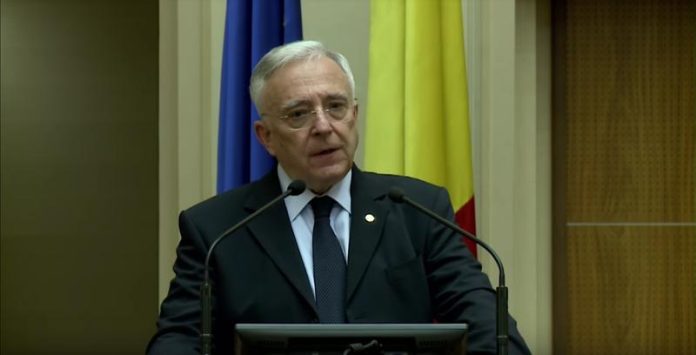The National Bank of Romania (BNR) has taken the decision to cut its monetary policy rate to avoid getting stuck with it in autumn, when it will probably be more difficult or there will be disruptive factors that could styme a decision to cut the monetary policy rate, BNR Governor Mugur Isarescu said on Friday.
„The main disinflationary contribution is expected to come from the developments in the adjusted CORE 2 inflation rate, the one we follow and on which monetary policy has a direct effect. What does that mean? It means that monetary policy is sufficiently firm, restrictive. It didn’t relax too much. We have cut the monetary policy rate following inflation developments, so as to avoid (…) getting stuck with the monetary policy rate in autumn, when it will probably be more difficult or there will be disruptive factors that could styme our decision to reduce the monetary policy rate. Think that at any time there can be a reversal of capital movements, capital outflows. We have something to do in this regard, we have a foreign exchange reserve, we have methods to sterilise surplus liquidity. So, we can react. I don’t think we will be able to go for a reduction of the monetary policy rate in such a negative scenario,” Isarescu told a news conference where he released BNR’s latest quarterly inflation report.
During the conference, he compared the monetary policy rates of the central banks of Hungary, Poland and the Czech Republic. He said that the Romanian central bank did not rush with the monetary policy rate raise because inflation did not „explode” strongly, and it did not go down extremely quickly, as the banks of Hungary, Poland and then the Czech Republic did, because inflation went down more manageably . Romania has applied the „higher for longer” principle in this case for a longer time, which generated discussions, including why the interest rate has not been lowered since May. BNR, said Isarescu, cut the monetary policy rate as the inflation rate was falling.
„What I want to tell you is, be careful, we are not using the idea that we have started a cycle of relaxation of the monetary policy. We do not use the word monetary policy relaxation because we have real positive interest rates compared to the past, yes, and we are not procyclical. Having an expansionary fiscal policy, high deficits, our rule is to keep a certain restrictiveness. How we calculate it is a topic of debate. I invite you in September to have a debate here on the restrictiveness of monetary policy. But it is not procyclical monetary policy. We don’t incentivise the economy too much. It is sufficiently incentivised by fiscal policy. We are very careful. Ours is fine tuning. We are very careful how much we reduce the monetary policy rate,” said Isarescu.
At the latest meeting of its board of directors, the National Bank of Romania decided to reduce the monetary policy interest rate in July and August by 0.25 percentage points each, to a current 6.50% per annum.
AGERPRES




